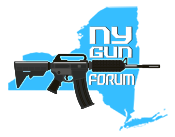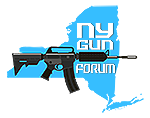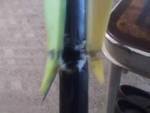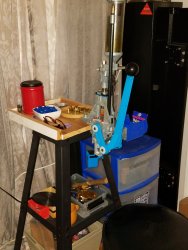Reloading has been a fun pastime for me for several years now. I got into reloading because I didn't like the way certain factory ammo companies load and test their cartridges, and reloading is still cheaper to do than buying factory ammo. Reloading is also very precise, and when done correctly, a rewarding hobby for someone who enjoys an accurate firearm. This is not a hobby someone with no knowledge of precision instruments is going to jump into; you have to have some back ground with instrumentation. Being able to read a Vernier Caliper and/or a micrometer is necessary in order to get precise measurements and accurate loads. This can also be a very dangerous hobby if not done correctly. Being distracted is one way to lose track of how much powder you put in a shell case, which can blowup in the gun when fired injuring not only you but bystanders as well.
First things first, what tools will you need to get started
1) A place to work (undisturbed) and a sturdy, well secured bench.
2) Good press. A used press in good shape is fine.
3) Set of dies and case holders for the calibers you are reloading
4) Reloading manuals
5) Case trimmer and collets to fit the necks of the cases you are reloading and a Vernier caliper.
6) Deburing / chambering tool
7) Good set of scales and scale weights, quality is more important than gadgetry. (I don't use electronic scales but you can)
8) Powder measure and trickier
9) Case lube and lube tray
10) A stuck or broken case remover
11) Case tumbler
12) Handheld priming tool
13) Depending on the State you live in, a powder storage container may be required.
Ok that is the list, so let’s tackle them one at a time:
1) A Place to Work (Undisturbed) and a Sturdy, Well Secured Bench
The place you work needs to be a place where you can shut out all outside interference; nothing should distract you from what you are doing. A mistake here can cost you your life or someone else's, it's that simple. This place should also be dry. Put a de-humidifier in the work area to be on the safe side. The bench needs to be sturdy and level. There are many places online that offer reloading benches, but mine is built from scratch. That way, I can build into it what I want. The operation of the press(s) puts a lot of pressure on the bench and the up and down motions will shift a poorly-secured bench and make it not level.
I constructed my bench with a 2x4 frame deck screwed to the wall with 4" screws. The top is one layer of 5/4 boards screwed to the frame every 6", with 2" deck screws and then a piece of 3/4." one-sided plywood glued and screwed to the 5/4 boards. The legs are 5/4 X 6" boards deck screwed to the floor with a center brace screwed to the wall and floor. It does not move when acted upon by the presses. The location in which you set up your reloading equipment is also important. Once a process is started it should be run to its completion without distraction, so locate your bench and supplies in a remote area of your home, or an out building. No phone or television!
2) A Good Press
The manufacturers of the tools used in reloading are all very good with respect to quality. The choice of whose name is on your gear is up to you. Some people have multistage units for faster reloads; I don't go agree with faster myself, but to each his own. Quality presses and die sets are a must! These do not have to be new; a used press that doesn't have a lot of side to side motion when the ram is raised and lowered, and that doesn't have worn out pins, can do the job just fine. I use 2 different types of presses and they are both were both used when I obtained them. The first is an RCBS Single Stage press that I use to size and decap my cases, and the other is a LEE 3 Stage press that I use for pressing the bullet into place. The reason for the LEE 3 Stage is that I reload different calibers; I can set up the bullet seating dies for each caliber, and just rotate the turret to the proper die without have to reinstall another one.
3) Set of Dies and Case Holders for the Calibers You are Reloading.
As all of the die sets manufactured are of the same thread any will work in your press. Again, quality is of the same importance throughout. Hornady New Dimension Dies just seem to work better, in my opinion. As with the presses, it is not necessary for you to buy new. A well-cared for used set will work very well. Shell holders are different for some calibers, so you will need to have the proper ones for the calibers you are reloading.
4) Reloading Manuals
It cannot be stressed enough how important these are in reloading. Manuals will give you more insight into what you need to know than any other source. When starting out read every handbook you can get your hands on. Some of them even have some great stories in them about hunts or target matches. Follow their recommendations for loads to the letter. A friend said once, "Always know exactly what the answer is." What he meant by that was, if you had a question in your mind about any part of the process, it should be answered before continuing to load. It is never safe in this hobby to guess. Know exactly what you are doing and how you are doing it.
5&6) Case Trimmer and Deburing Tool
The case trimmer is necessary because after firing and resizing a case, it tends to stretch and needs to be shortened so it will not bind in the chamber when loaded. There are also the electric powered trimmers. What you pick is up to you. The Deburing tool is for cleaning off bits of the case that is left on after trimming.
7) Scales and Weights
Scales are one tool that needs to be set and rechecked often. The ability to get the same amount of powder in each case depends upon a good scale. I recommend getting a set of weights first then go to your retailer and check the accuracy of the scales. Zero the scale out, and place the weights one at a time to check the accuracy. Buy the most accurate scale available; often this does not mean electronic or most expensive.
8) Powder Measure and Trickier
These items are a must have, both are indispensable. A good powder dump can save a lot of time trying to weigh out loads by hand. Powder Measures may not always dump the same amount of powder, but they are very close. After the powder is dumped into your scale pan, use the trickier to add in minute amounts until the desired weight is reached for each case.
9) Case Lube and Lube Tray
The case lube and lube tray are where I differ from some folks. I don't use a tray to lube my cases; I prefer to hand lube each case. I not only save money this way, but lube also.
10,11,12) Stuck or Broken Case Remover, Case Tumbler, and Handheld Priming Tool
These items are something people recommend, and are items that can also be purchased new or used. A broken case remover is handy. However, if you lube the case you should not need one.
The case tumbler is also a tool some say is necessary and some say not. There are two sides to every road. Tumbling cases is said to be good for cleaning them however; some people say that tumbling cases causes deformities when they run into each other. I have a case tumbler that I built, and have seen no imperfections caused by this process. The hand held priming tool is not necessary, due to the fact that most presses have priming mechanisms built in. I prefer a handheld tool because I can feel when the primer is seated more easily than I can with the long handle of the press.
13) Powder Storage Container
This item is totally up to you and your state requirements. Check with your state police or local authorities for any laws regarding this item. Some states are very strict on how much powder you may store and the manner in which you store it.
So, in conclusion, run out with your list and get all the items listed here! Again, all the items are available on the Internet; check there for prices and then look local to see if you can get a better deal. This will be a 2-part segment. If you are interested, in the interim, read everything you can about reloading and we will get together to talk about what you have learned. If you have any questions about this article, E-mail me. I will reply as soon as possible...
Okay, so you have gone out and made the necessary purchases. You are looking at all your new stuff and asking yourself, "Now what?" Now what is that you get those reloading manuals out and you read them; and I mean every page! The Manuals are the bibles of reloading. They will keep you from making mistakes which could seriously injure, or even kill you or someone else.
Big John
November 1st, 2006
First things first, what tools will you need to get started
1) A place to work (undisturbed) and a sturdy, well secured bench.
2) Good press. A used press in good shape is fine.
3) Set of dies and case holders for the calibers you are reloading
4) Reloading manuals
5) Case trimmer and collets to fit the necks of the cases you are reloading and a Vernier caliper.
6) Deburing / chambering tool
7) Good set of scales and scale weights, quality is more important than gadgetry. (I don't use electronic scales but you can)
8) Powder measure and trickier
9) Case lube and lube tray
10) A stuck or broken case remover
11) Case tumbler
12) Handheld priming tool
13) Depending on the State you live in, a powder storage container may be required.
Ok that is the list, so let’s tackle them one at a time:
1) A Place to Work (Undisturbed) and a Sturdy, Well Secured Bench
The place you work needs to be a place where you can shut out all outside interference; nothing should distract you from what you are doing. A mistake here can cost you your life or someone else's, it's that simple. This place should also be dry. Put a de-humidifier in the work area to be on the safe side. The bench needs to be sturdy and level. There are many places online that offer reloading benches, but mine is built from scratch. That way, I can build into it what I want. The operation of the press(s) puts a lot of pressure on the bench and the up and down motions will shift a poorly-secured bench and make it not level.
I constructed my bench with a 2x4 frame deck screwed to the wall with 4" screws. The top is one layer of 5/4 boards screwed to the frame every 6", with 2" deck screws and then a piece of 3/4." one-sided plywood glued and screwed to the 5/4 boards. The legs are 5/4 X 6" boards deck screwed to the floor with a center brace screwed to the wall and floor. It does not move when acted upon by the presses. The location in which you set up your reloading equipment is also important. Once a process is started it should be run to its completion without distraction, so locate your bench and supplies in a remote area of your home, or an out building. No phone or television!
2) A Good Press
The manufacturers of the tools used in reloading are all very good with respect to quality. The choice of whose name is on your gear is up to you. Some people have multistage units for faster reloads; I don't go agree with faster myself, but to each his own. Quality presses and die sets are a must! These do not have to be new; a used press that doesn't have a lot of side to side motion when the ram is raised and lowered, and that doesn't have worn out pins, can do the job just fine. I use 2 different types of presses and they are both were both used when I obtained them. The first is an RCBS Single Stage press that I use to size and decap my cases, and the other is a LEE 3 Stage press that I use for pressing the bullet into place. The reason for the LEE 3 Stage is that I reload different calibers; I can set up the bullet seating dies for each caliber, and just rotate the turret to the proper die without have to reinstall another one.
3) Set of Dies and Case Holders for the Calibers You are Reloading.
As all of the die sets manufactured are of the same thread any will work in your press. Again, quality is of the same importance throughout. Hornady New Dimension Dies just seem to work better, in my opinion. As with the presses, it is not necessary for you to buy new. A well-cared for used set will work very well. Shell holders are different for some calibers, so you will need to have the proper ones for the calibers you are reloading.
4) Reloading Manuals
It cannot be stressed enough how important these are in reloading. Manuals will give you more insight into what you need to know than any other source. When starting out read every handbook you can get your hands on. Some of them even have some great stories in them about hunts or target matches. Follow their recommendations for loads to the letter. A friend said once, "Always know exactly what the answer is." What he meant by that was, if you had a question in your mind about any part of the process, it should be answered before continuing to load. It is never safe in this hobby to guess. Know exactly what you are doing and how you are doing it.
5&6) Case Trimmer and Deburing Tool
The case trimmer is necessary because after firing and resizing a case, it tends to stretch and needs to be shortened so it will not bind in the chamber when loaded. There are also the electric powered trimmers. What you pick is up to you. The Deburing tool is for cleaning off bits of the case that is left on after trimming.
7) Scales and Weights
Scales are one tool that needs to be set and rechecked often. The ability to get the same amount of powder in each case depends upon a good scale. I recommend getting a set of weights first then go to your retailer and check the accuracy of the scales. Zero the scale out, and place the weights one at a time to check the accuracy. Buy the most accurate scale available; often this does not mean electronic or most expensive.
8) Powder Measure and Trickier
These items are a must have, both are indispensable. A good powder dump can save a lot of time trying to weigh out loads by hand. Powder Measures may not always dump the same amount of powder, but they are very close. After the powder is dumped into your scale pan, use the trickier to add in minute amounts until the desired weight is reached for each case.
9) Case Lube and Lube Tray
The case lube and lube tray are where I differ from some folks. I don't use a tray to lube my cases; I prefer to hand lube each case. I not only save money this way, but lube also.
10,11,12) Stuck or Broken Case Remover, Case Tumbler, and Handheld Priming Tool
These items are something people recommend, and are items that can also be purchased new or used. A broken case remover is handy. However, if you lube the case you should not need one.
The case tumbler is also a tool some say is necessary and some say not. There are two sides to every road. Tumbling cases is said to be good for cleaning them however; some people say that tumbling cases causes deformities when they run into each other. I have a case tumbler that I built, and have seen no imperfections caused by this process. The hand held priming tool is not necessary, due to the fact that most presses have priming mechanisms built in. I prefer a handheld tool because I can feel when the primer is seated more easily than I can with the long handle of the press.
13) Powder Storage Container
This item is totally up to you and your state requirements. Check with your state police or local authorities for any laws regarding this item. Some states are very strict on how much powder you may store and the manner in which you store it.
So, in conclusion, run out with your list and get all the items listed here! Again, all the items are available on the Internet; check there for prices and then look local to see if you can get a better deal. This will be a 2-part segment. If you are interested, in the interim, read everything you can about reloading and we will get together to talk about what you have learned. If you have any questions about this article, E-mail me. I will reply as soon as possible...
Okay, so you have gone out and made the necessary purchases. You are looking at all your new stuff and asking yourself, "Now what?" Now what is that you get those reloading manuals out and you read them; and I mean every page! The Manuals are the bibles of reloading. They will keep you from making mistakes which could seriously injure, or even kill you or someone else.
Big John
November 1st, 2006
Last edited:













